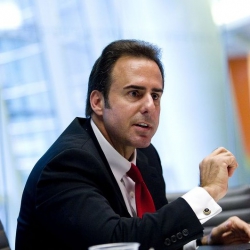
$426 million in “deconsolidation and restructing costs” were blamed for the $435 million in net losses in the 4th Quarter of 2016.
Caesars Entertainment Corporation released its fourth quarter and full-year financial results, which were mixed. While revenues rose 3.2% year-on-year, Caesars explained the bankruptcy reorganization costs had hurt profits.
For the final three months of 2016, the net loss for Caesars Entertainment was $435 million. Those losses compare to a net loss of $39 million for the company during the same period in 2015. Net taking for the three month period were $949 million, which was a 3% increase over 2015.
$426 Million Accrual Due to Restructuring
The losses had to do with the $426 million accrual that it must pay to support the restructuring of Caesars Entertainment Operating Company (CEOC). CEOC is still in the midst of a 2-year bankruptcy reorgnization, though the operations unit of Caesars Entertainment only recently got a judge’s approval to move ahead with the plan.
Caesars Entertainment Corporation’s year-on-year increase for the full year was 0.4%, for a total of $2.17 billion in casino takings for the year. Net revenues were $3.88 billion, for a total year-on-year increase of 2.8%. Annual adjusted earnings before interest, tax, depreciation, and amortization rose by a full 31% to $1.14 billion.
Deconsolidation Cost of $5.75 Billion
For the full year, deconsolidation and restructing costs spiraled to $5.75 billion. That accounts for the annual net loss of $2.74 billion. In 2015, the net surplus was $6.13 billion.
In its report, Caesars Entertainment explained that the huge swing in net losses was due to CEOC reporting such a huge deconsolidation and restructuring cost.
Mark Frissora Statement on Q4 Losses
Mark Frissora, President and CEO of Caesars Entertainment Corporation, released a statement on the disappointing Q4 report, saying, “Caesars Entertainment [Corporation] delivered a second consecutive year of solid operational improvement and margin expansion driven by strong performance in Las Vegas, our largest market, and continued productivity improvements.”
The CEO, who took over for Gary Loveman which it became apparent new leadership was needed for a bankruptcy and full reorganization, explained about the further renovations the company has made over the past 3 years.
Frissora said, “We also generated record full-year cash hotel revenues as we renovated over 8,000 rooms domestically since 2014. This year, we intend to deliver additional cash flow and margin improvements while completing [CEOC’s] restructuring.”
Mark Frissora (pictured above) continued by saying that the long-term plan continues unabated, and promised that the CEOC plan would lead to better times for its parent company. Frissora said, “These actions will allow us to continue to generate more value for our stakeholders as we execute against our long-term plan.”
Caesars Entertainment Profile
Caesars Entertainment continues to own more casino properties than any other company in the United States domestic casino market. The company is the only one of the big four Las Vegas casino companies — including Las Vegas Sands, Wynn Resorts, and MGM Resorts — which did not build casinos in Macau. For years, that appeared to be a huge weakness for Caesars, though it has been less of a concern since the 2014 downturn in Macau’s fortunes.
Instead, it was the 2008 leveraged buyout by Apollo Global Management and TPG Holdings over Harrah’s Entertainment (now Caesars) which led to the current financial troubles. It cost about $30 billion for Apollo/TPG to buy out Harrah’s in January 2008. The purchase might have worked, had the American real estate and financial industries collapsed 8 months later.
With a global recession and weak American economy, Caesars (as it was renamed in 2009) was particularly poorly situated. It is a testament to the company’s huge assets that the $30 billion in debt was bought down to $23 billion by 2015. That did not stop CEOC from declaring bankruptcy, as the operations division of the company owned $18 billion of the debt.
Turning the Corner for CEOC
A two-year lawsuit ensued with junior creditors, who complained they were saddled with roughly $9 billion in debt with few assets to show for it. That dispute finally might be settled with Judge Goldgar’s approval to proceed with a bankrupty case in court.
If the bankruptcy plan is approved in the next few months, the 4th Quarter of 2016 might be seen as the low point for the company’s financial fortunes. Next year at this time, Mark Frissora might be able to post much better revenue reports.
